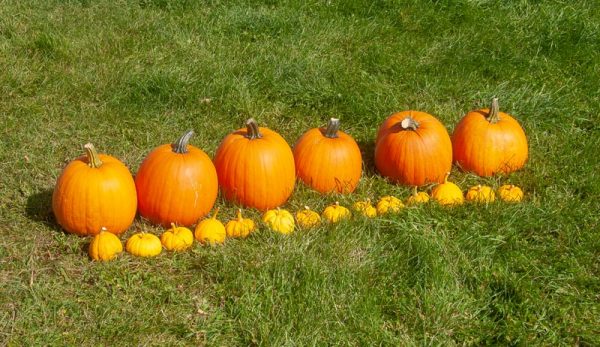
Happy Thanksgiving!
Like many things in 2020, Thanksgiving Day will look a bit different this year. COVID-19 has turned the world upside down, changing the course of traditional celebrations.
But the core of Thanksgiving—giving thanks—remains unaltered. And since we can never spend too much time counting our blessings, let me start the ball rolling by sharing four farming-related successes I’m thankful for in 2020. Feel free to follow along and share your own list online!
I’m thankful for…
Growing an Abundance of Pumpkins
One of my goals for 2020 was to grow pumpkins inside my orchard deer fence, encouraging the vines to climb the welded wire and grow vertically rather than horizontally. I’m happy to report the project was a resounding success.
Planting three different varieties in raised beds, I was delighted to see my pumpkins grow at a rapid rate—they clearly appreciated the rich compost soil and daily watering I provided.
Seemingly every day the leaves grew larger, the vines longer, and—eventually—the pumpkins riper. When all was said and done, I harvested a couple dozen miniature pumpkins and half a dozen medium-sized pumpkins.
Suffice to say, I plan to repeat and even expand my planting in 2021, adding more pumpkins and even some watermelons to the mix. I’m certainly thankful for this farming success!
Read more: Learn about the author’s plan for growing pumpkins vertically.
Planting 8 New Flowering Crabapple Trees
Another of my major goals for 2020 was to plant two parallel rows of flowering crabapple trees (four trees per row) to serve as a beautiful entrance to my orchard. My vision was clear, but wet ground proved to be a stumbling block.
I planned on planting the two rows on a mild slope, but the ground at the bottom of the slope refused to drain as well as I’d hoped, delaying planting while I pondered my options.
In the end, I planted the bottommost trees about 8 inches above ground level, surrounding their root balls with an abundance of top soil hauled in from elsewhere on my farm. The result was better than I anticipated, creating a win-win situation where my trees can enjoy dry feet while maintaining the two parallel rows I’d envisioned.
Producing 2,200 Bales of Hay
Last year was a down year for hay production of my farm, so I was glad to see the 2020 crop bounce back in a big way. Even though wet weather during the summer made it challenging to find three-day windows for baling, by the time all the fields were cut, ~2,200 small square bales were stacked in the barn.
Not only that, hay season went by with a minimum of equipment malfunctions—only one shear pin gave out. You can’t ask for a smoother run than that!
Read more: When hay season rolls around, keep this checklist handy to stay ready.
Discovering a Hidden Patch of Daylilies
While spreading some grass clippings along the edge of the farm woodlands, I happened upon an undiscovered patch of daylilies tucked away in the shade of young chokecherry and ash trees. The patch was large—approximately 6 feet across—and while the daylilies weren’t really thriving in their shaded location, they took off as soon as I transplanted a few to my orchard.
Growing in full sun, they flowered steadily, adding a touch of red and orange to the green of the trees. I’m excited to transplant more daylilies in 2021!
What farming events are you thankful for in 2020?




